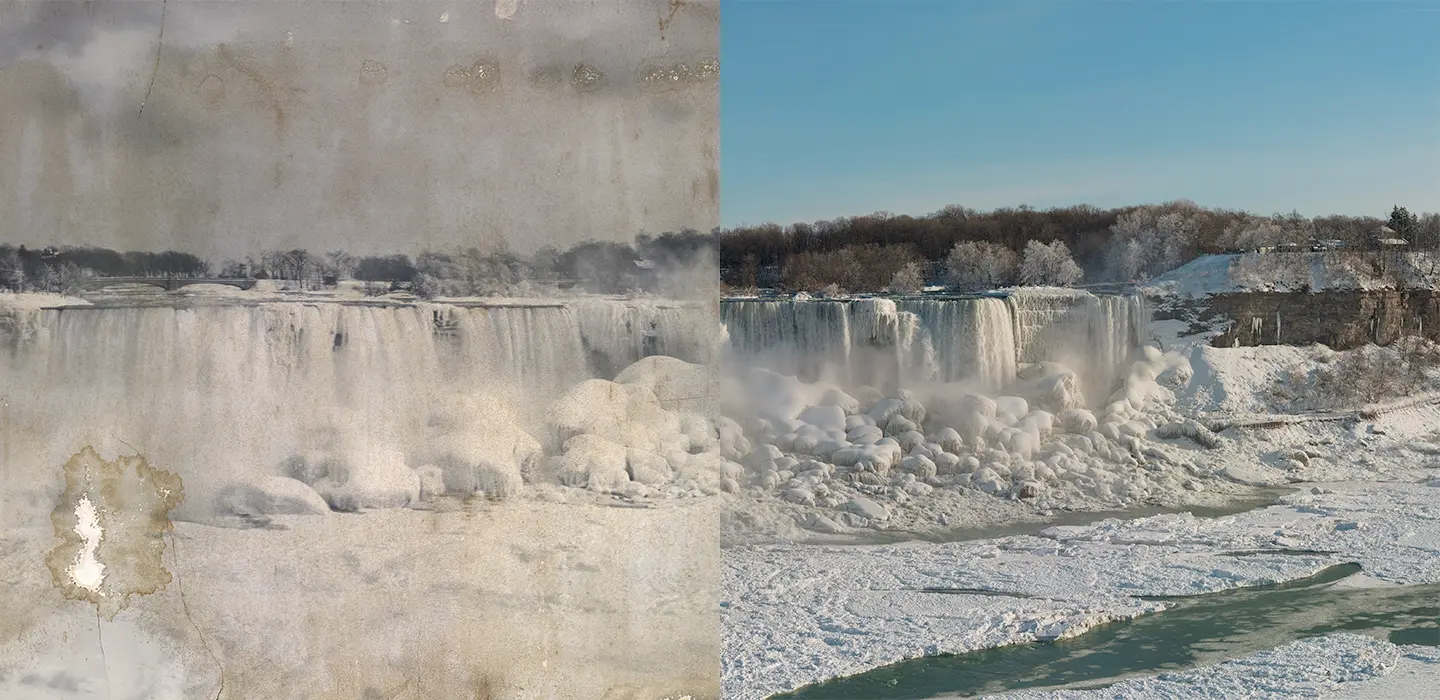
Enjoying the view
The power and beauty of Niagara Falls have been moving people for centuries. As part of preserving this legacy, the Archives of Ontario created copies of William Thomson Freeland’s panoramas for display—and, 100 years later, they inspired new work.
As two of the largest depictions of a key cultural landmark in Ontario, Freeland’s Niagara Falls panoramas could not just remain hidden in the Archives’ storage vault. So, after the Archives moved to its current home on York University’s Keele campus, staff hung high-quality copies in the reading room and produced this online exhibit for widespread virtual access. Over a century after Freeland produced his photographs, they continue to astound audiences and spark new creative output.
A room with a view
The copies of Freeland’s Niagara Falls panoramas in the Archives of Ontario’s reading room allow visitors to stand before the same sweeping vistas that captivated Freeland and appreciate his skill with the camera technology of his day. Although the copies faithfully capture the detail of Freeland’s original photos and the damage they endured, the likenesses had to be scaled down by about 25% to fit on the reading room’s largest wall for display. Thanks to these copies, thousands of visitors have enjoyed these photos and their fascinating journey from the Queen’s Park attic to the Archives.
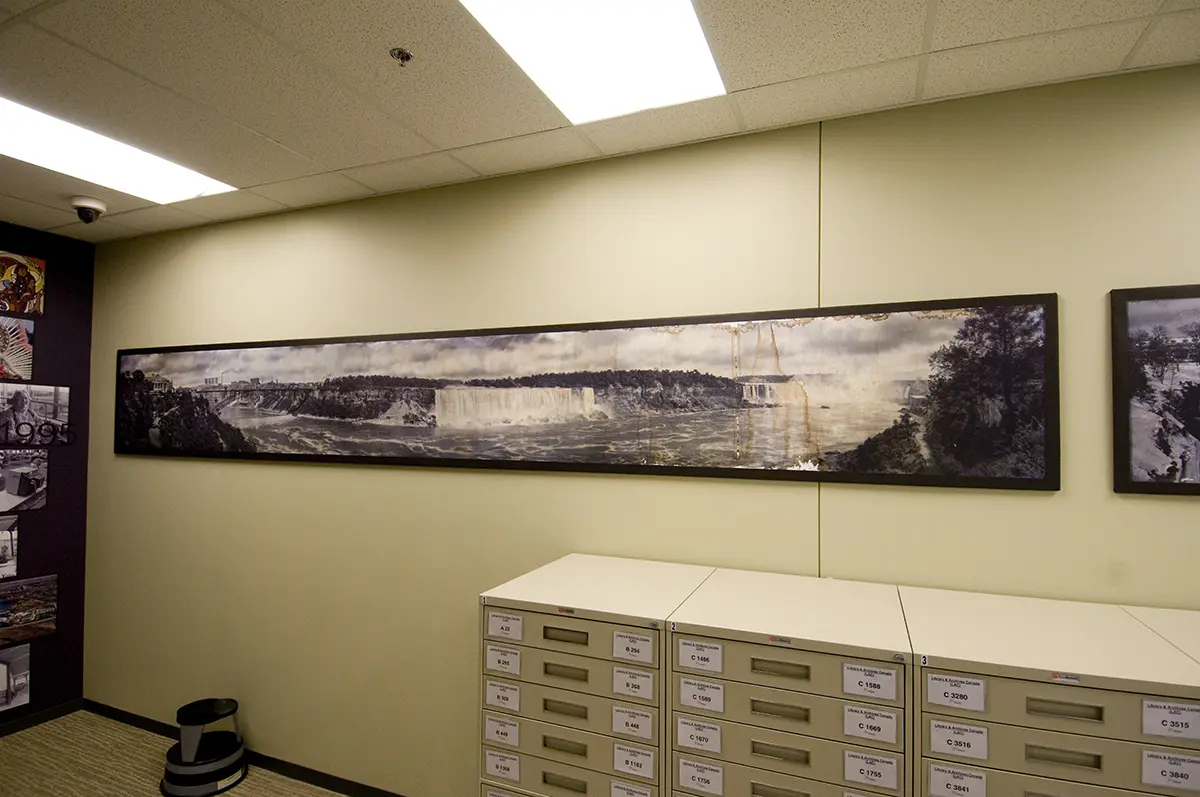
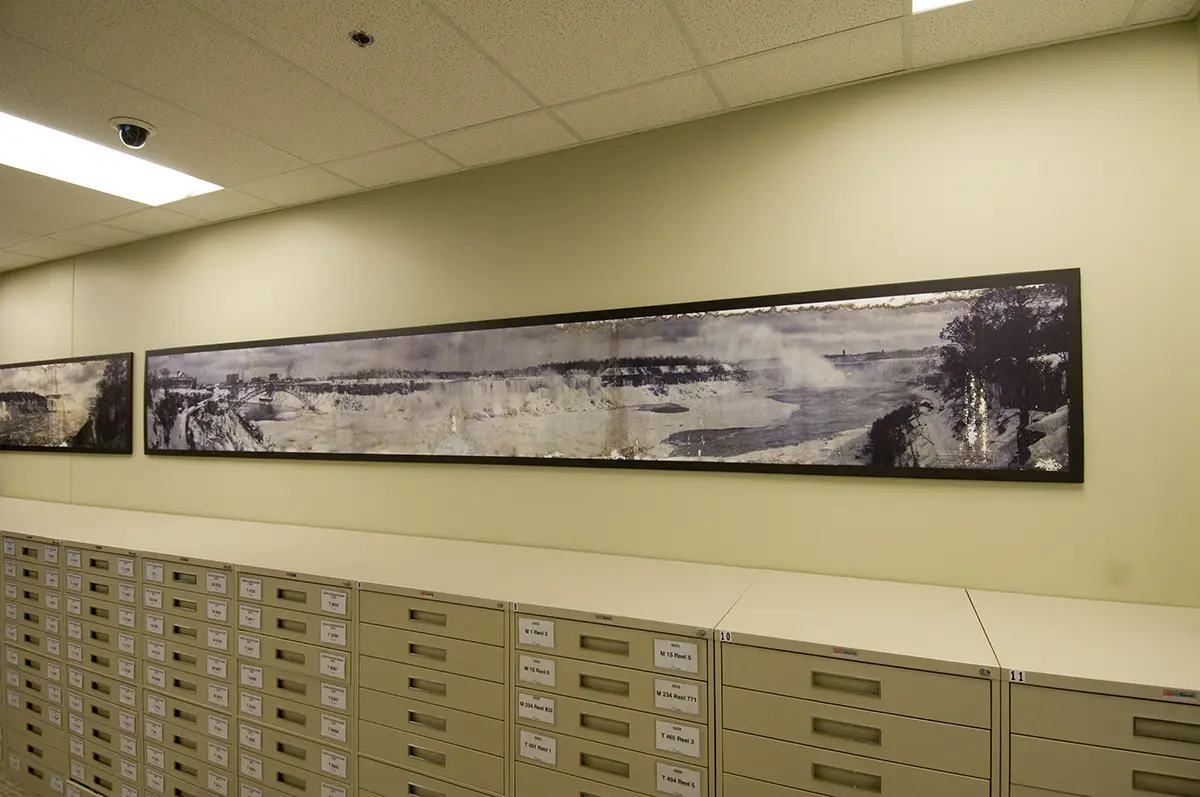
A magical comparison
Inspired by Freeland’s work, former Archives of Ontario staff member Scott Barrie set out to recreate the panoramas using modern photography equipment exactly one hundred years after Freeland took his photographs. “It’s such a magical comparison, the juxtaposition of the state-of-the-art panorama from early in the last century to the state-of-the-art panorama in 2012,” Barrie expressed. “It was pretty neat to be standing there knowing that precisely one hundred years ago, Mr. Freeland was standing in exactly the same spot creating essentially the same image.”
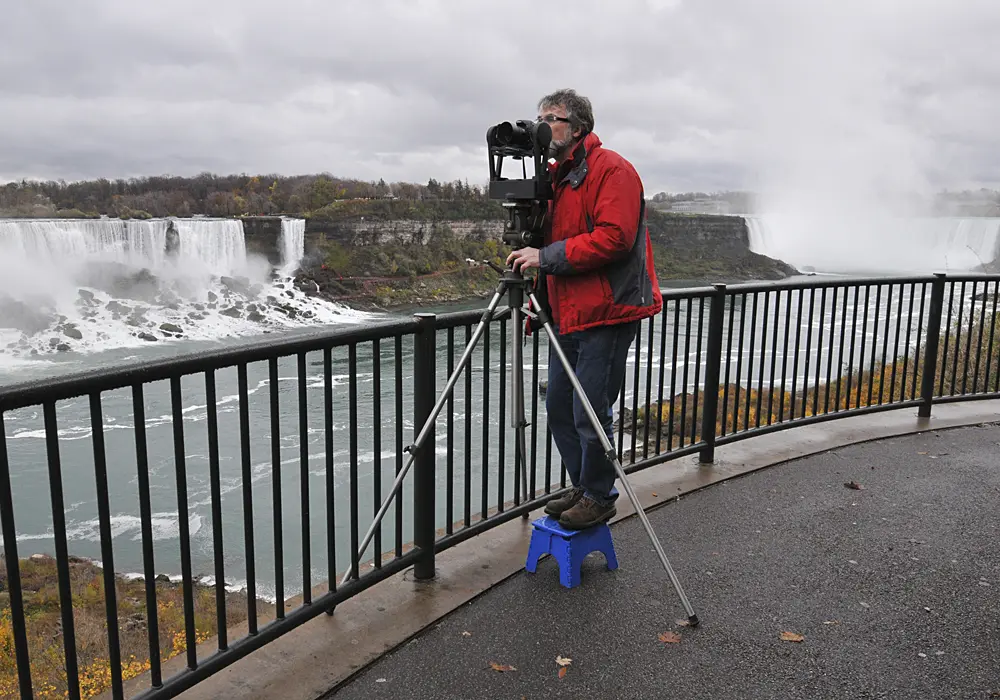
Evolving camera technology
While Freeland created his panoramas in a single exposure, Barrie digitally stitched together a variety of images at different focal lengths taken on his Nikon D300 camera over a three-hour period. Barrie’s photographs could quite easily produce a print equal to or larger in size than Freeland’s photos and reveal a great deal more detail, exposing the considerable advancements in camera technology during the 100-year period between Freeland’s and Barrie’s panoramas.
Witnessing weather changes
When Freeland photographed his winter panorama on November 1, 1912, the area was blanketed in snow. However, when Barrie took his photo exactly a century later, the weather was much warmer and there was no snow in sight. As a result, Barrie’s November 2012 photo bears a closer resemblance to Freeland’s panorama from June 1913, though he later recreated the winter panorama when conditions mirrored those in Freeland’s scene. Beyond changes in camera technology over the decades, the differences between Freeland’s and Barrie’s photos also point to changes in our planet’s weather patterns.
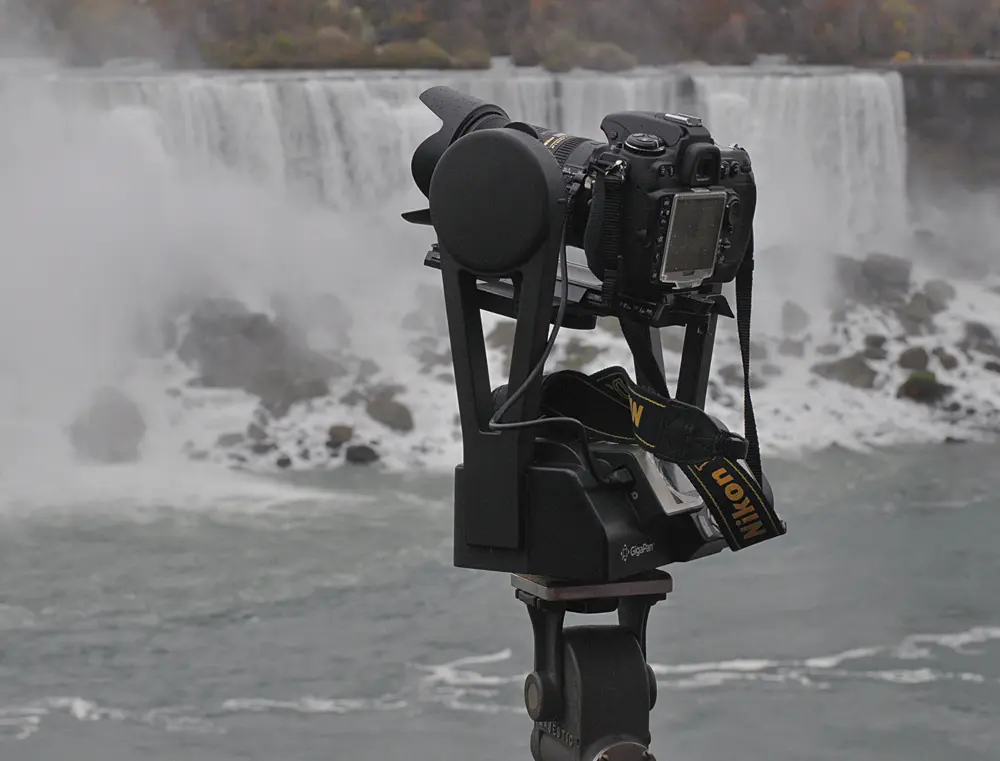
Use the image sliders below to compare Freeland’s panoramas from 1912 and 1913 to Barrie’s photos from one hundred years later. The result is both an homage and evidence of evolution—a century-spanning dialogue between photographers, anchored by the force of Niagara Falls.




Freeland’s and Barrie’s panoramas of the Falls reminds us that, while landscapes may shift and technology may change, the desire to document and share beauty is timeless. Beyond their stunning subject matter, these images also serve as touchstones that connect us to people, places and perspectives that inspire new ways of understanding our world and our relationship to it—much like archives today.
Back to: Chapter 5
The move
Return to:
Online exhibits
Looking for more records?
Search our collection